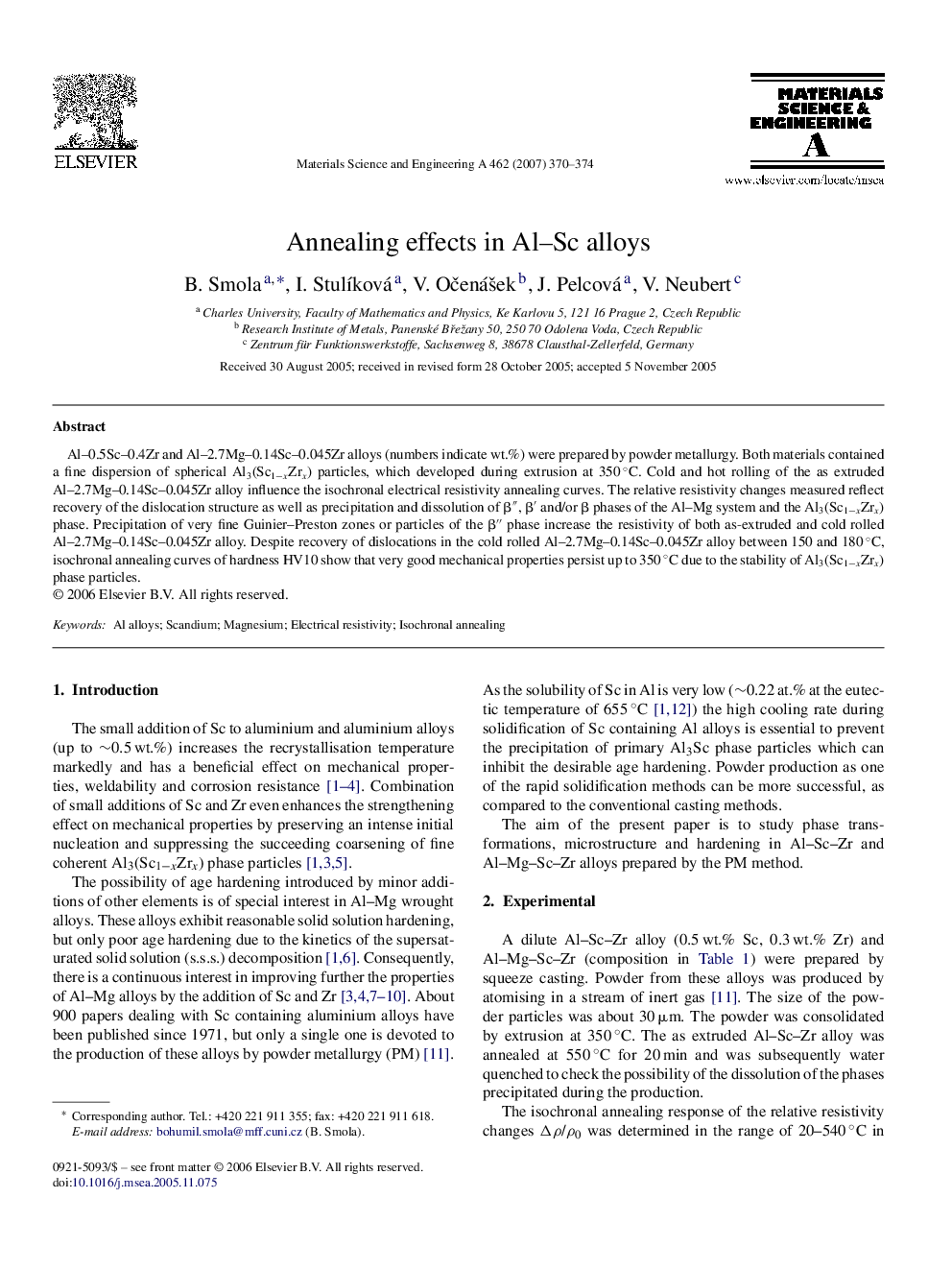| Article ID | Journal | Published Year | Pages | File Type |
|---|---|---|---|---|
| 1583431 | Materials Science and Engineering: A | 2007 | 5 Pages |
Al–0.5Sc–0.4Zr and Al–2.7Mg–0.14Sc–0.045Zr alloys (numbers indicate wt.%) were prepared by powder metallurgy. Both materials contained a fine dispersion of spherical Al3(Sc1−xZrx) particles, which developed during extrusion at 350 °C. Cold and hot rolling of the as extruded Al–2.7Mg–0.14Sc–0.045Zr alloy influence the isochronal electrical resistivity annealing curves. The relative resistivity changes measured reflect recovery of the dislocation structure as well as precipitation and dissolution of β″, β′ and/or β phases of the Al–Mg system and the Al3(Sc1−xZrx) phase. Precipitation of very fine Guinier–Preston zones or particles of the β″ phase increase the resistivity of both as-extruded and cold rolled Al–2.7Mg–0.14Sc–0.045Zr alloy. Despite recovery of dislocations in the cold rolled Al–2.7Mg–0.14Sc–0.045Zr alloy between 150 and 180 °C, isochronal annealing curves of hardness HV10 show that very good mechanical properties persist up to 350 °C due to the stability of Al3(Sc1−xZrx) phase particles.
